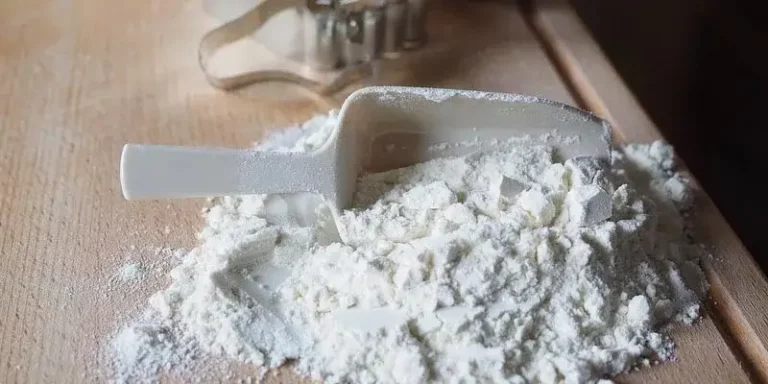Flour is a staple in many families and households across the world. Flour is used in many ways, not only for cooking and baking. It is also used for making pasta, breadcrumbs, pie crusts, certain types of confectionery, and more.
This question of whether flour goes bad is one that people ask themselves over and over again.
Does Flour Go Bad?
Flour does not go bad if stored well in a sealed container; however, if you are using old flour, it can go soggy and lose its texture, changing its ability to work with other ingredients when baked.
When it comes to storing food in general, it is recommended to store flour in an airtight container.
If you are using flour to make the dough, it’s recommended to use fresh eggs and butter rather than adding egg substitute or oil when storing for later use.
How Long Does Flour Last?
The answer to this question depends on a couple of factors. The first factor that plays into how long it takes for flour to go bad is the kind of flour that you are using.
For example, all-purpose flour will last for about 6 to 8 months while cake flour lasts anywhere from six months to a year.
In addition, how you store your flour can also play a role in how long it lasts. If you keep your flour in an airtight container or refrigerate it, it will last longer than if you leave it out on the counter or in a cupboard.
In the refrigerator, you can expect flour to last for up to 1 year.
When storing them in the freezer, the flour will last much longer and it will be about 2 years before it starts to go bad.
How to Store Flour
There are many different ways to store flour, but the most common ones are in an airtight container or sealed tin canister. Airtight containers with lids or screw-on tight tops are important for storing flour because they prevent moisture and oxygen from getting into the container and degrading the quality of the flour. Then store the flour in the pantry or cupboard.
For long-term storage, you can freeze your flour in ziplock bags.
Store unbleached, unbromated, unaltered, unsifted all-purpose flour in airtight containers with lids or screw-on tight tops. Because humidity can cause browning and oxidation, it is best to store your flour in a vacuum-sealed bag or an airtight container that has been completely dried out before use.
How to Tell If Flour Is Bad?
How to tell if your flour is bad depends on many different factors. Some of them are how long the flour has been stored, where it’s stored, and the temperature where it’s stored
It’s important when flour goes bad, you should discard it. Consuming flour that is bad can lead to food poisoning.
Signs of spoilage include:
- Color changes from white to yellow, brown, or grey
- A musty smell that is unlike normal flour
- Strong of yeast or alcohol
- The texture is sticky and slimy instead of powdery smooth
How To Keep Flour Fresh Longer
The best way to keep flour fresh is to keep it out of the light and away from moisture.
Another way to extend their shelf life is to either refrigerate or freeze all your unused flour according to its storage instructions on the packaging or bag that it comes in.
If you’re storing flour in the refrigerator, try not to open the door too often because oxygen can cause your dough to rise and ruin its quality.
If you’re storing them in the freezer, keep them at the back of the freezer. The flour will be less affected by the constant changes in the temperature when the door is opened and closed.
Related Questions
Can bad flour make you sick?
Flour is one of the primary ingredients in baking and cooking. It’s also a key ingredient in many foods we eat, like cereal or bread. Bad flour could be contaminated with harmful bacteria that can make you sick.
Flour could be contaminated with harmful bacteria like E-Coli and salmonella which could make you sick and even lead to death.
Therefore, if you suspect that the flour is bad, you should discard the entire content.

